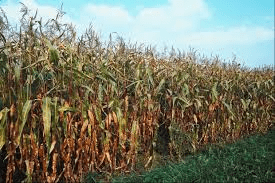In practice, to achieve reducing crop deterioration, preservation of procedures are aim at avoiding microbial and biochemical deterioration which are the principal forms of deterioration.
Even with all recent progress in practice preservation procedures aim at avoiding microbiological and biochemical achieved in this field, no single one of these technological procedures applied alone can be considered wholly satisfactory from a microbiological, physico-chemical and organoleptic point of view, even if to a great extent the food value is assured.
Methods of Reducing Crop Deterioration
Different methods have been employed to reduce crop deterioration. Some of these methods include physical, chemical and biochemical processes.
1. Technical Methods of Reducing Crop Deterioration
Table: Technical methods of reducing crop deterioration
| Physical | Heating |
| Cooling | |
| Lowering of water content drying/dehydration/concentration | |
| Sterilising filtration | |
| Irradiation | |
| Other physical means high pressure, vacuum, inert gasses | |
| Chemical | Salting |
| Sugar addition | |
| Artificial acidification | |
| Ethyl alcohol addition | |
| Antiseptic substance action | |
| Biochemical | Lactic fermentation (natural acidification) |
| Alcoholic fermentation |
From the whole list of possible methods of reducing deterioration, over the years, some procedures for fruit and vegetable preservation have found practical application.
Procedures for Fruit and Vegetable Preservation
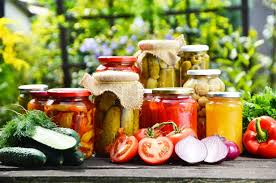
Table: Procedures for fruit and vegetable preservation
| Procedures | Practical applications |
| Fresh storage | Fruits and vegetables |
| Cold storage | Fruits and vegetables |
| Freezing | Fruits and vegetables |
| Drying/dehydration | Fruits and vegetables |
| Concentration | Fruits and vegetables juice |
| Chemical preservation | Fruits semi-processed |
| Preservation with sugar | Fruits products/preserve |
| Pasteurization | Fruits and vegetables juice |
| Sterilization | Fruits and vegetables |
| Sterilizing filtration | Fruits juices |
| Irradiation | Fruits and vegetables |
These preservation procedures have two main characteristics as far as being applied to all food products is concerned:
Some of them are applied only to one or some categories of foods; others can be used across the board and thus a wider application (cold storage, freezing, drying/dehydration, sterilisation, etc.).
Some guarantee food preservation on their own while others require combination with other procedures, either as principal or as auxiliary processes in order to assure preservation (for example smoking has to be preceded by salting).
Combined Preservation Procedures
In practice, preservation of procedures are aim at avoiding microbial and biochemical deterioration which are the principal forms of deterioration.
Even with all recent progress In practice preservation procedures aim at avoiding microbiological and biochemical achieved in this field, no single one of these technological procedures applied alone can be considered wholly satisfactory from a microbiological, physico-chemical and organoleptic point of view, even if to a great extent the food value is assured.
Therefore, heat sterilization cannot be applied in order to destroy all micro-organisms present in foods without inducing non desirable modifications. Preservation by dehydration/drying assures microbiological stability but has the drawback of undesirable modifications that appear during storage such as vitamin losses, oxidation phenomena, etc.
The principles of combined preservation procedures are:
Avoid or reduce secondary (undesirable) effects in efficient procedures for microbiological preservation;
Avoid qualitative degradation appearing during storage of products preserved by efficient procedures from a microbiological point of view;
Increase microbiological efficiency of preservation procedures by supplementary means;
Combine preservation procedures in order to obtain maximum efficiency from a microbiological point of view, by specific action on various types of micro-organisms present;
Establish combined factors that act simultaneously on bacterial cells.
Fresh fruit and vegetable storage can be combined with:
Storage in controlled atmosphere where carbon dioxide and oxygen levels are monitored, increasing concentration of CO2 and lowering that of oxygen according to fruit species.
Excellent results were obtained for pomace fruit, in particular the storage period for apples has been extended. Application of this combined procedure requires airtight storage rooms.
Storage in an environment containing ethylene oxide; this accelerates ripening in some fruit, e.g. tomatoes, bananas, mangoes, etc.
Cold storage can be combined with storage in an environment with added of carbon dioxide, sulphur dioxide, etc. according to the nature of product to be preserved.
Preservation by drying/dehydration can be combined with:
Freezing: fresh fruit and vegetables are dehydrated up to the point where their weight is reduced by 50% and then they are preserved by freezing.
This procedure (freeze-drying) combines the advantages of drying (reduction of volume and weight) with those of freezing (maintaining vitamins and to a large extent organoleptic properties).
A significant advantage of this process is the short drying time in so far as it is not necessary to go beyond the inflexion point of the drying curve. The finished products after defreezing and rehydration/reconstitution are of a better quality compared with products obtained by dehydration alone.
Cold storage of dried/dehydrated vegetables in order to maintain vitamin C; storage temperature can be varied with storage time and can be at -8° C for a storage time of more than one year, with a relative humidity of 70-75%.
Packaging under vacuum or in inert gases in order to avoid action of atmospheric oxygen; mainly for products containing beta-carotene.
Chemical preservation: a process used intensively for prunes and which has commercial applications is to rehydrate the dried product up to 35% using a bath containing hot 2% potassium sorbate solution.
Another possible application of this combined procedure is the initial dehydration up to 35% moisture followed by immersion in same bath as explained above; this has the advantage of reducing drying time and producing minimum qualitative degradation. Both applications suppress the dehydrated products reconstitution (rehydration) step before consumption.
Packaging in the presence of desiccants (calcium oxide, anhydrous calcium chloride, etc.) in order to reduce water vapour content in the package, especially for powdered products.
Preservation by concentration, carried out by evaporation, is combined with cold storage during warm season for tomato paste (when water content cannot be reduced under the limit needed to inhibit molds and yeasts, e.g. aw = 0.70. 0.75).
Chemical preservation is combined with;
Acidification of food medium (lowering pH);
Using combined chemical preservatives;
Preservation by lactic fermentation (natural acidification) can be combined with cold storage for pickles in order to prolong storage time or shelf-life;
Preservation with sugar is combined with pasteurization for some preserves having sugar content below 65 %;
General Procedures for Fruit and Vegetable Preservation
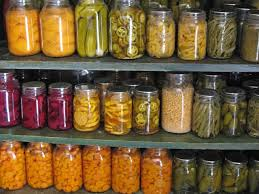
1. Fresh Fruit and Vegetable Storage
Once fruit is harvested, any natural resistance to the action of spoiling micro-organisms is lost. Changes in enzymatic systems of the fruit also occur on harvest which may also accelerate the activity of spoilage organisms.
Means that are commonly used to prevent spoilage of fruits must include;
Care to prevent cutting or bruising of the fruit during picking or handling;
Refrigeration to minimise growth of micro-organisms and reduce enzyme activity;
Packaging or storage to control respiration rate and ripening;
Use of preservatives to kill micro-organisms on the fruit.
A principal economic loss occurring during transportation and/or storage of produce such as fresh fruit is the degradation which occurs between the field and the ultimate destination due to the effect of respiration.
Methods to reduce such degradation are as follows;
Refrigerate the produce to reduce the rate of respiration;
Vacuum cooling;
Reduce the oxygen content of the environment in which the produce is kept to a value not above 5% of the atmosphere but above the value at which anaerobic respiration would begin. When the oxygen concentration is reduced within 60 minutes the deterioration is in practice negligible.
Recent developments in post-harvest technology of fresh fruits and vegetables
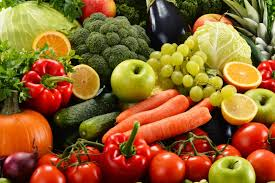
Harvest Maturity: This is particularly important with fruit for export. One recent innovation is the measurement of resonant frequency of the fruit which should enable the grading out of over mature and under-mature fruit before they are packed for export.
Harvest Method: Considerable research is continuing on mechanical harvesting of perishable crops with a view to minimizing damage. In fruit trees, controlling their height by use of dwarfing rootstocks, pruning and growth regulating chemicals will lead to easier, cheaper more accurate harvesting.
Handling Systems: Field packing of various vegetables for export has been carried out for many years. In the last decade or so this has been applied, in selected cases, to a few tropical fruit types.
Where this system can be practiced it has considerable economic advantages in saving the cost of building, labour and equipment and can result in lower levels of damage into crops.
Pre-cooling: Little innovation has occurred in crop pre-cooling over the last decade. However high velocity, high humidity forced air systems have continued to be developed and refined.
These are suitable for all types of produce and are relatively simple to build and operate and, while not providing the speed of cooling of a vacuum or hydrocooler, have the flexibility to be used with almost all crops.
Chemicals: There is a very strong health lobby whose objective is to reduce the use of chemicals in agriculture and particularly during the postharvest period.
Every year sees the prohibition of the use of commonly used post-harvest chemicals. New ways need to be developed to control post-harvest diseases, pest and sprouting.
Coatings: Slowing down the metabolism of fruit and vegetables by coating them with a material which affects their gaseous exchange is being tested and used commercially on a number of products.
Controlled environment transport: Recent innovations in this technique have produced great progress as a result of the development and miniaturization equipment to measure carbon dioxide and oxygen: Several companies now offer containers where the levels of these two gases can be controlled very precisely.
Preservation by reduction of water content
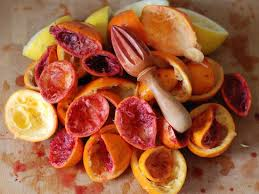
a. Water and water activity (aw) in foods
Micro-organisms in a healthy growing state may contain in excess of 80% water. They get this water from the food in which they grow. If the water is removed from the food it also will transfer out of the bacterial cell and multiplication will stop.
Partial drying will be less effective than total drying, though for some micro-organisms partial drying may be quite sufficient to arrest bacterial growth and multiplication.
Read Also : Transportation of Crop produce and Factors that may Compromise Quality during Transportation
Bacteria and yeasts generally require more moisture than molds, and so molds often will be found growing on semi-dry foods where bacteria and yeasts find conditions unfavourable; example are molds growing on partially dried fruits.
Slight differences in relative humidity in the environment in which the food is kept or in the food package can make great differences in the rate of micro-organism multiplication.
Since micro-organisms can live in one part of a food that may differ in moisture and other physical and chemical conditions from the food just millimeters away, we must be concerned with conditions in the “microenvironment” of the micro-organisms. Thus it is common to refer to water conditions in terms of specific activity.
The term “water activity” is related to relative humidity. Relative humidity is defined as the ratio of the partial pressure of water vapour in the air to the vapour pressure of pure water at the same temperature. Relative humidity refers to the atmosphere surrounding a material or solution.
Water activity or aw is a property of solutions and is the ratio of vapour pressure of the solution compared with the vapour pressure of pure water at the same temperature. Under equilibrium conditions water activity equals:
aw = RH / 100
When we speak of moisture requirements of micro-organisms we really mean water activity in their immediate environment, whether this be in solution, in a particle of food or at a surface in contact with the atmosphere.
At the usual temperatures permitting microbial growth, most bacteria require a water activity in the range of about 0.90 to 1.00.
Some yeasts and molds grow slowly at a water activity down to as low as about 0.65.
Qualitatively, water activity is a measure of unbound, free water in a system available to support biological and chemical reactions. Water activity, not absolute water content, is what bacteria, enzymes and chemical reactants encounter and are affected by at the micro-environmental level in food materials.
Preservation by Drying/Dehydration
The technique of drying is probably the oldest method of food preservation practiced by mankind. The removal of moisture prevents the growth and reproduction of micro-organisms causing decay and minimizes many of the moisture mediated deterioration reactions.
It brings about substantial reduction in weight and volume minimising packing, storage and transportation costs and enable storability of the product under ambient temperatures, features especially important for developing countries. The sharp rise in energy costs has promoted a dramatic upsurge in interest in drying world-wide over the last decade.
In osmotic dehydration the prepared fresh material is soaked in a heavy (thick liquid sugar solution) and/or a strong salt solution and then the material is sun or solar dried. During osmotic treatment the material loses some of its moisture. The syrup or salt solution has a protective effect on colour, flavour and texture.
This protective effect remains throughout the drying process and makes it possible to produce dried products of high quality. This process makes little use of sulphur dioxide.
Heat and Mass Transfer
Dehydration involves the application of heat to vaporise water and some means of removing water vapour after its separation from the fruit/vegetable tissues.
Hence it is a combined/simultaneous (heat and mass) transfer operation for which energy must be supplied. A current of air is the most common medium for transferring heat to a drying tissue and convection is mainly involved.
The two important aspects of mass transfer are;
The transfer of water to the surface of material being dried and
The removal of water vapour from the surface.
In order to assure products of high quality at a reasonable cost, dehydration must occur fairly rapidly.
Four main factors affect the rate and total drying time:
The properties of the products, especially particle size and geometry;
The geometrical arrangement of the products in relation to heat transfer medium (drying air);
The physical properties of drying medium/ environment;
The characteristics of the drying equipment.
It is generally observed with many products that the initial rate of drying is constant and then decreases, sometimes at two different rates. The drying curve is divided into the constant rate period and the falling rate period.
Factors that Influence the Drying Process
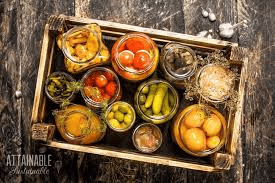
Surface area: Generally the fruit and vegetables to be dehydrated are cut into small pieces or thin layers to speed heat and mass transfer. Subdivision speeds drying for two reasons:
Large surface areas provide more surface in contact with the heating medium (air) and more surface from which moisture can escape;
Smaller particles or thinner layers reduce the distance heat must travel to the centre of the food and reduce the distance through which moisture in the centre of the food must travel to reach the surface and escape.
Temperature: The greater the temperature difference between the heating medium and the food the greater will be the rate of heat transfer into the food, which provides the driving force for moisture removal. When the heating medium is air, temperature plays a second important role.
As water is driven from the food in the form of water vapour it must be carried away, or else the moisture will create a saturated atmosphere at the food’s surface which will slow down the rate of subsequent water removal. The hotter the air the more moisture it will hold before becoming saturated.
Therefore, high temperature air in the vicinity of the dehydrating food will take up the moisture being driven from the food to a greater extent than will cooler air. Obviously, a greater volume of air also can take up more moisture than a lesser volume of air.
Air velocity: Not only will heated air take up more moisture than cool air, but air in motion will be still more effective.
Air in motion, that is, high velocity air, in addition to taking up moisture will sweep it away from the drying food’s surface, preventing the moisture from creating a saturated atmosphere which would slow down subsequent moisture removal. This is why clothes dry more rapidly on a windy day.
Dryness of air: When air is the drying medium of food, the drier the air the more rapid is the rate of drying. Dry air is capable of absorbing and holding moisture.
Moist air is closer to saturation and so can absorb and hold less additional moisture than if it were dry. But the dryness of the air also determines how low a moisture content the food product can be dried to.
Atmospheric pressure and vacuum: If food is placed in a heated vacuum chamber the moisture can be removed from the food at a lower temperature than without a vacuum.
Alternatively, for a given temperature, with or without vacuum, the rate of water removal from the food will be greater in the vacuum. Lower drying temperatures and shorter drying times are especially important in the case of heat-sensitive foods.
Evaporation and temperature: As water evaporates from a surface it cools the surface. The cooling is largely the result of absorption by the water of the latent heat of phase change from liquid to gas.
In doing this the heat is taken from the drying air or the heating surface and from the hot food, and so the food piece or droplet is cooled.
Time and temperature: Since all important methods of food dehydration employ heat, and food constituents are sensitive to heat, compromises must be made between maximum possible drying rate and maintenance of food quality.
As is the case in the use of heat for pasteurization and sterilisation, with few exceptions drying processes which employ high temperatures for short times do less damage to food than drying processes employing lower temperatures for longer times.
Thus, vegetable pieces dried in a properly designed oven in four hours would retain greater quality than the same products sun dried over two days.
Several drying processes will achieve dehydration in a matter of minutes or even less if the food is sufficiently subdivided.
Drying Techniques
Several types of dryers and drying methods, each better suited for a particular situation, are commercially used to remove moisture from a wide variety of food products including fruit and vegetables.
While sun drying of fruit crops is still practiced for certain fruit such as prunes, figs, apricots, grapes and dates, atmospheric dehydration processes are used for apples, prunes, and several vegetables; continuous processes as tunnel, belt trough, fluidised bed and foam-mat drying are mainly used for vegetables.
Spray drying is suitable for fruit juice concentrates and vacuum dehydration processes are useful for low moisture / high sugar fruits like peaches, pears and apricots.
Factors on which the selection of a particular dryer/ drying method depends include:
Form of raw material and its properties;
Desired physical form and characteristics of dried product;
Necessary operating conditions;
Operation costs.
There are three basic types of drying process:
Sun drying and solar drying;
Atmospheric drying including batch (kiln, tower and cabinet dryers) and continuous (tunnel, belt, belt-trough, fluidised bed, explosion puff, foam-mat, spray, drum and microwave);
Sub-atmospheric dehydration (vacuum shelf/belt/drum and freeze dryers).
The scope has been expanded to include use of low temperature, low energy process like osmotic dehydration. As far dryers are concerned, one useful division of dryer types separates them into air convection dryers, drum or roller dryers, and vacuum dryers.
Table: Common types of dryers used for liquid and solid foods.
| Dryer type | Usual food type |
| Air convection dryers | |
| kiln | pieces |
| Cabinet, tray or pan | pieces, purées, liquids |
| Tunnel | pieces |
| Continuous conveyor belt | purées, liquids |
| Belt trough | pieces |
| Air lift | small pieces, granules |
| Fluidized bed | small pieces, granules |
| Spray | liquid, purées |
| Drum or roller dryers | |
| Atmospheric | purées, liquids |
| Vacuum | purées, liquids |
| Vacuum dryers | |
| Vacuum shelf | pieces, purées, liquids |
| Vacuum belt | purées, liquids |
| freeze dryers | pieces, liquids |
Fruit and Vegetable Natural Drying
1. Sun and Solar Drying
Surplus production and specifically grown crops may be preserved by natural drying for use until the next crop can be grown and harvested. Natural dried products can also be transported cheaply for distribution to areas where there are permanent shortages of fruit and vegetables.
The methods of producing sun and solar dried fruit and vegetables described here are simple to carry out and inexpensive. They can be easily employed by grower, farmer, cooperative, etc.
The best time to preserve fruits and vegetables is when there is a surplus of the product and when it is difficult to transport fresh materials to other markets. This is especially true for crops which are very easily damaged in transport and which stay in good condition for a very short time.
Preservation extends the storage (shelf) life of perishable foods so that they can be available throughout the year despite their short harvesting season.
Sun and solar drying of fruits and vegetables is a cheap method of preservation because it uses the natural resource/ source of heat: sunlight. This method can be used on a commercial scale as well at the village level provided that the climate is hot, relatively dry and free of rainfall during and immediately after the normal harvesting period.
The fresh crop should be of good quality and as ripe (mature) as it would need to be if it was going to be used fresh. Poor quality produce cannot be used for natural drying.
Dried fruit and vegetables have certain advantages over those preserved by other methods. They are lighter in weight than their corresponding fresh produce and, at the same time, they do not require refrigerated storage.
However, if they are kept at high temperatures and have high moisture content they will turn brown after relatively short periods of storage.
Different lots at various stages of maturity (ripeness) must not be mixed together; this would result in a poor dried product.
Some varieties of fruit and vegetables are better for natural drying than other; they must be able to withstand natural drying without their texture becoming tough so that they are not difficult to reconstitute.
Some varieties are unsuitable because they have irregular shape and there is a lot of wastage in trimming and cutting such varieties.
Read Also : Process of Carrying Out Shifting Cultivation
Damaged parts which have been attacked by insects, rodents, diseases, etc. and parts which have been discoloured or have a bad appearance or colour, must be removed. Before trimming and cutting, most fruit and vegetables must be washed in clean water. Onions are washed after they have been peeled.
Trimming includes the selection of the parts which are to be dried, cutting off and disposing of all unwanted material. After trimming, the greater part of the fruit and vegetables cut into even slices of about 3 to 7 mm thick or in halves/quarters, etc.
It is very important to have all slices/parts in one drying lot of the same thickness/size; the actual thickness will depend on the kind of material. Uneven slices or different sizes dry at different rates and this result in a poor quality end product.
Onions and root crops are sliced with a hand slicer or vegetable cutter; bananas, tomatoes and other vegetables or fruit are sliced with stainless-steel knives.
Some fruit and vegetables, in particular bananas, apples and potatoes, go brown very quickly when left in the air after peeling or slicing; this discoloration is due to an active enzyme called phenoloxidase.
To prevent the slices from going brown they must be kept under water until drying can be started. Salt or sulphites in solution give better protection. However, whichever method is used, further processing should follow as soon as possible after cutting or slicing.
The main problems for sun drying are dust, rain and cloudy weather. Therefore, drying areas should be dust-free and whenever there is a threat of a dust storm or rain, the drying trays should be stacked together and placed under cover.
In order to produce dust-free and hygienically clean products, fruit and vegetable material should be dried well above ground level so that they are not contaminated by dust, insects, livestock or people.
All materials should be dried on trays designed for the purpose; the most common drying trays have wooden frames with a fitted base of nylon mosquito netting. Mesh made of woven grass can also be used. Metal netting must not be used because it discolours the product.
The trays should be placed on a framework at table height from the ground. This allows the air to circulate freely around the drying material and it also keeps the food product well away from dirt. Ideally the area should be exposed to wind and this speed up drying, but this can only be done if the wind is free of dust.
2. Blanching
Exposing fruit and vegetable to hot or boiling water – as a pre-treatment before drying has the following advantages:
It helps clean the material and reduce the amount of micro-organisms present on the surface;
It preserves the natural colour in the dried products; for example, the carotenoid (orange and yellow) pigments dissolve in small intracellular oil drops during blanching and in this way they are protected from oxidative breakdown during drying;
It shortens the soaking and/or cooking time during reconstitution.
During hot water blanching, some soluble constituents are leached out: water-soluble flavours, vitamins (vitamin C) and sugars. With potatoes this may be an advantage as leaching out of sugars makes the potatoes less prone to turning brown.
Blanching is a delicate processing step; time, temperature and the other conditions must be carefully monitored.
A suitable water-blanching method in traditional processing is as follows:
The sliced material is placed on a square piece of clean cloth; the corners of the cloth are tied together;
A stick is put through the tied corners of the cloth;
The cloth is dipped into a pan containing boiling water and the stick rests across the top of the pan thus providing support for the cloth bag.
The average blanching time is 6 minutes. The start of blanching has to be timed from the moment the water starts to boil again after the cloth bag has been dipped into the pan. While the material is being blanched the cloth bag should be raised and lowered in the water so that the material is heated evenly.
When the blanching time is completed the cloth bag and its content should be dipped into cold water to prevent over-blanching. If products are over-blanched (boiled for too long) they will stick together on the drying trays and they are likely to have a poor flavour.
Green beans, carrots, okra, turnip and cabbage should always be blanched. The producer can choose whether or not potatoes need blanching. Blanching is not needed for onions, leeks, tomatoes and sweet peppers. Tomatoes are dipped into hot water for one minute when they need to be peeled but this is not blanching. As a rule fruits are not blanched.
In summary, the choice of method of storage depend the moisture content of the product when it comes from the field and the relative humidity of the outside air during the storage period.
Slight differences in relative humidity in the environment in which the food is kept or in the food package can make great differences in the rate of micro-organism multiplication. In practice food preservation procedures aim at avoiding microbiological and biochemical deterioration which are the principal forms of deterioration.
Micro-organisms in a healthy growing state may contain in excess of 80% water. They get this water from the food in which they grow. If the water is removed from the food it also will transfer out of the bacterial cell and multiplication will stop.
Partial drying will be less effective than total drying, though for some micro-organisms partial drying may be quite sufficient to arrest bacterial growth and multiplication.
High temperature and high moisture are the most significant factors affecting grain quality in storage. Each can cause rapid decline in germination, malting quality, baking quality, colour, oil composition, and many other quality characteristics.
Insects and moulds impair the quality of grain directly by their feeding and development, and indirectly through generation of heat and moisture. High temperatures and moistures favour development of insects and moulds.
Development of insects is limited by temperatures below 15°C, and by moistures below 9% in cereal grains. Development of moulds is limited by temperatures below 10°C, and by moistures below 13% in cereal grains.
Spraying with insecticides or fumigating minimises insect problems but leaves chemical residues in grain, which break down with time. Presence of residues, and their concentration, affects acceptability of the grain to markets.
Various methods of storage have evolved over time and depending on crops to be stored and the environmental conditions.
Food preservation techniques cold storage, freezing, drying/dehydration, sterilization, etc. are applied only to one or some categories of foods; others can be used across the board and thus a wider application.
Some guarantee food preservation on their own while others require combination with other procedures, either as principal or as auxiliary processes in order to assure preservation (for example smoking has to be preceded by salting).
Exposure of fruits and vegetables to ionising radiation slows their rate of ripening, to inhibit sprouting and thereby extend the shelf life of potatoes, onions and garlic.
It is very important from a practical point of view to avoid any product contamination after boiling and to assure a hygienic operation of the whole technological process (this will contribute to the prevention of product molding or fermentation).
Read Also: Agricultural Wastes Complete Management Guide

